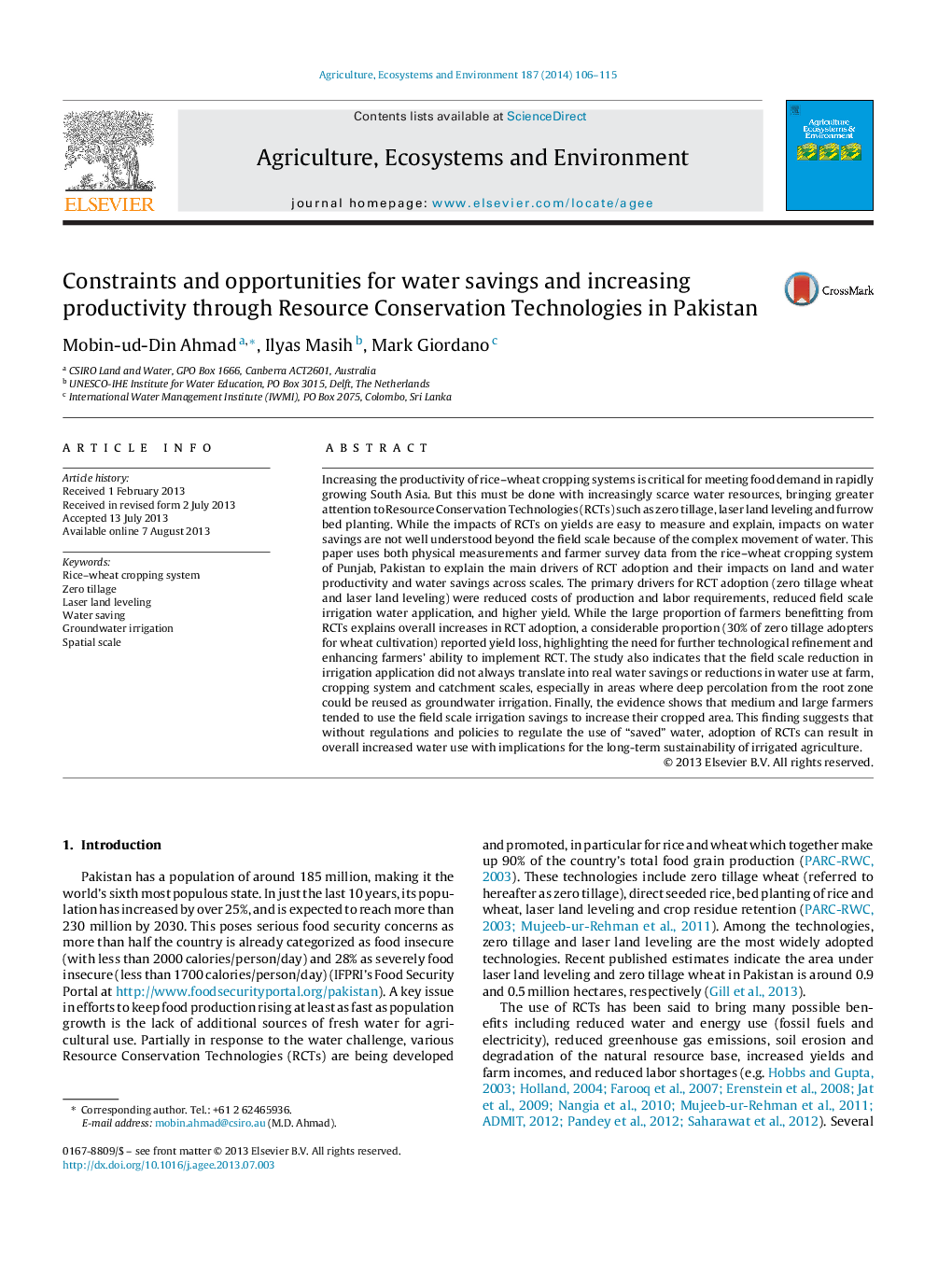| کد مقاله | کد نشریه | سال انتشار | مقاله انگلیسی | نسخه تمام متن |
|---|---|---|---|---|
| 2414119 | 1552065 | 2014 | 10 صفحه PDF | دانلود رایگان |
• Profitability and water scarcity are main drivers of RCTs adoption in Pakistan.
• Yield reducing RCTs for rice are not adopted even if they save lot of water.
• Field scale water savings cannot be linearly extrapolated at higher spatial scales.
• The reduction in water depletion is essential to achieve real water savings.
• Ensuring real water savings under RCTs require changes in policies and regulations.
Increasing the productivity of rice–wheat cropping systems is critical for meeting food demand in rapidly growing South Asia. But this must be done with increasingly scarce water resources, bringing greater attention to Resource Conservation Technologies (RCTs) such as zero tillage, laser land leveling and furrow bed planting. While the impacts of RCTs on yields are easy to measure and explain, impacts on water savings are not well understood beyond the field scale because of the complex movement of water. This paper uses both physical measurements and farmer survey data from the rice–wheat cropping system of Punjab, Pakistan to explain the main drivers of RCT adoption and their impacts on land and water productivity and water savings across scales. The primary drivers for RCT adoption (zero tillage wheat and laser land leveling) were reduced costs of production and labor requirements, reduced field scale irrigation water application, and higher yield. While the large proportion of farmers benefitting from RCTs explains overall increases in RCT adoption, a considerable proportion (30% of zero tillage adopters for wheat cultivation) reported yield loss, highlighting the need for further technological refinement and enhancing farmers’ ability to implement RCT. The study also indicates that the field scale reduction in irrigation application did not always translate into real water savings or reductions in water use at farm, cropping system and catchment scales, especially in areas where deep percolation from the root zone could be reused as groundwater irrigation. Finally, the evidence shows that medium and large farmers tended to use the field scale irrigation savings to increase their cropped area. This finding suggests that without regulations and policies to regulate the use of “saved” water, adoption of RCTs can result in overall increased water use with implications for the long-term sustainability of irrigated agriculture.
Journal: Agriculture, Ecosystems & Environment - Volume 187, 1 April 2014, Pages 106–115
